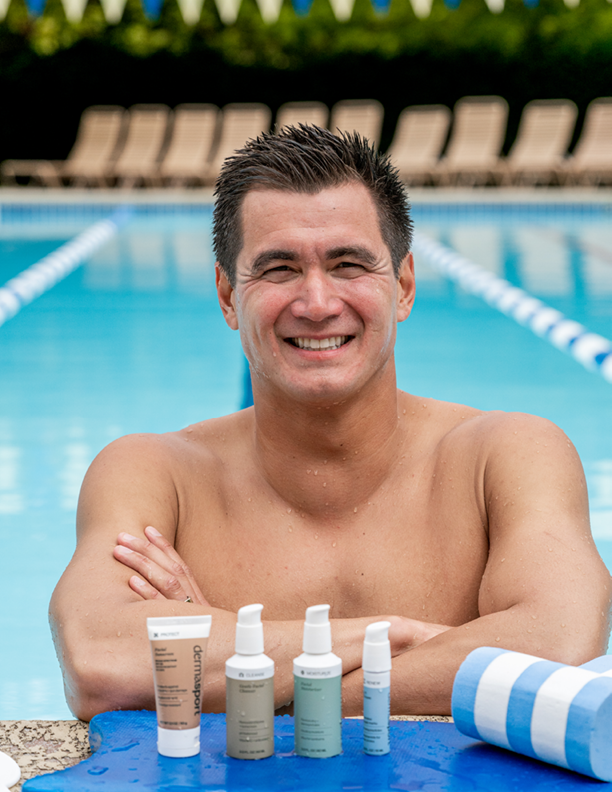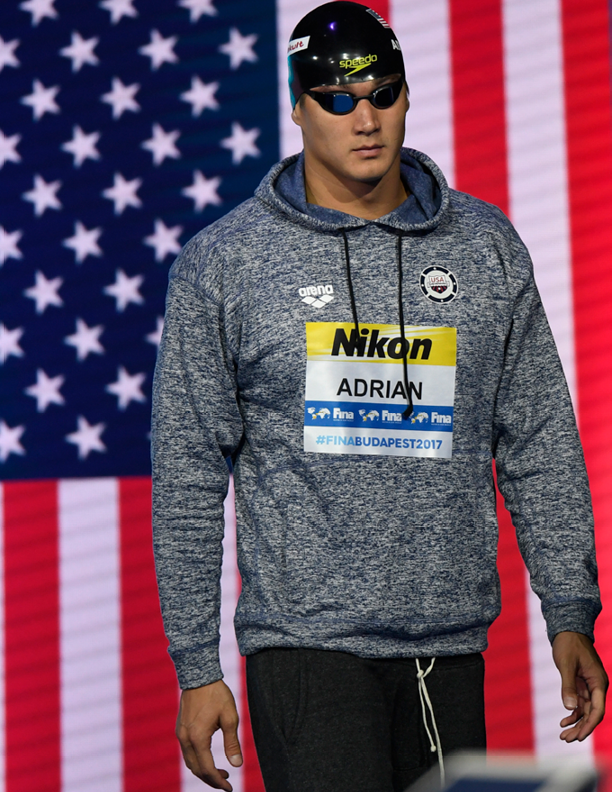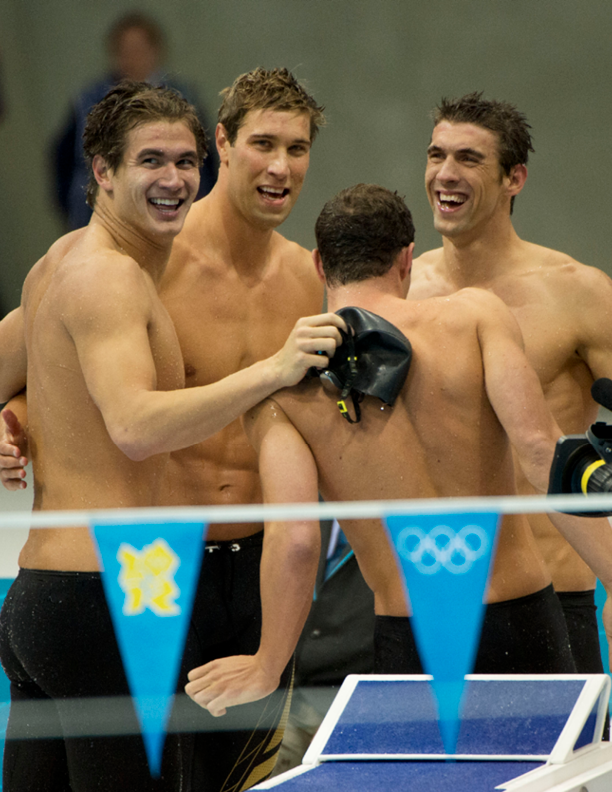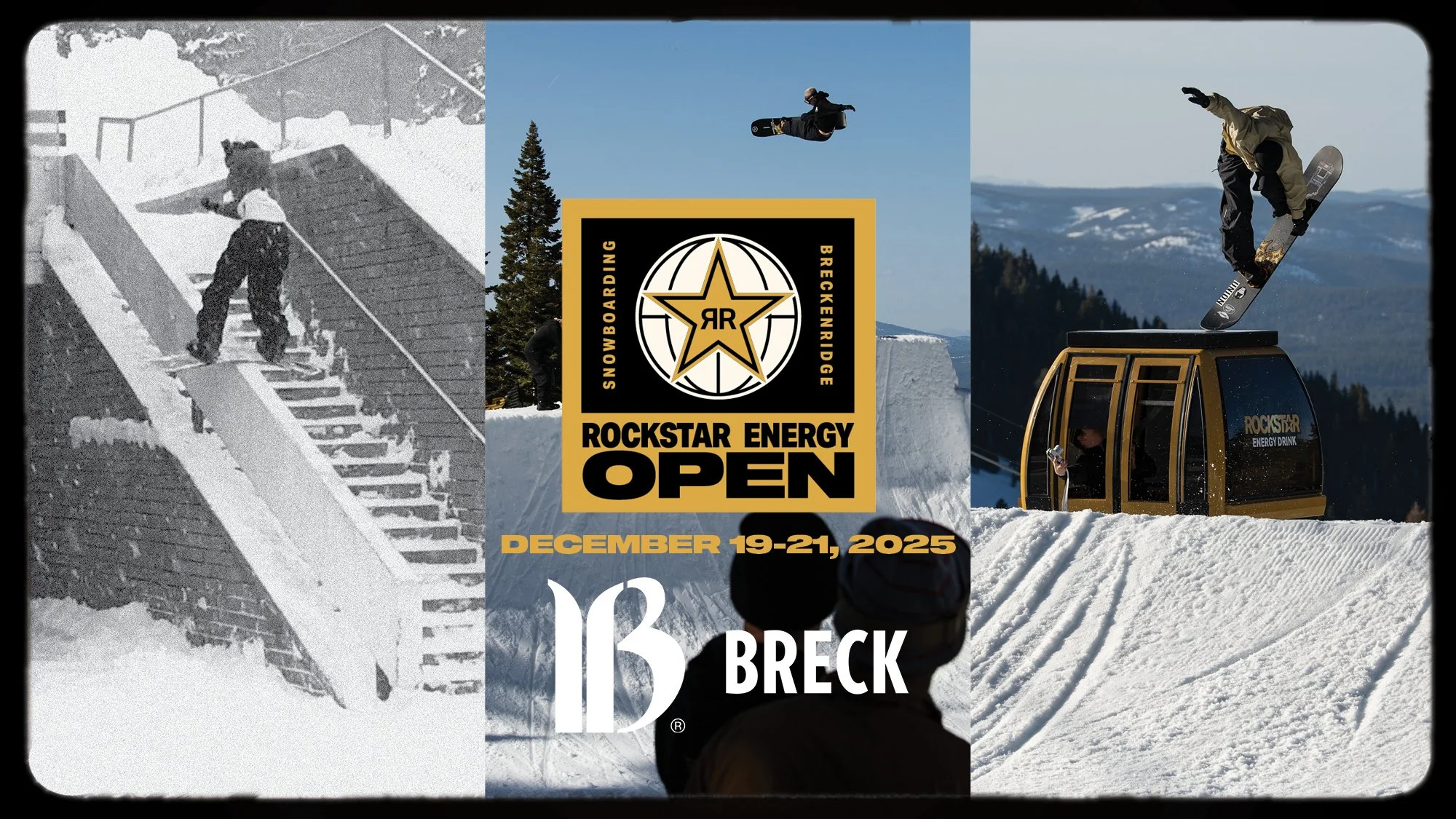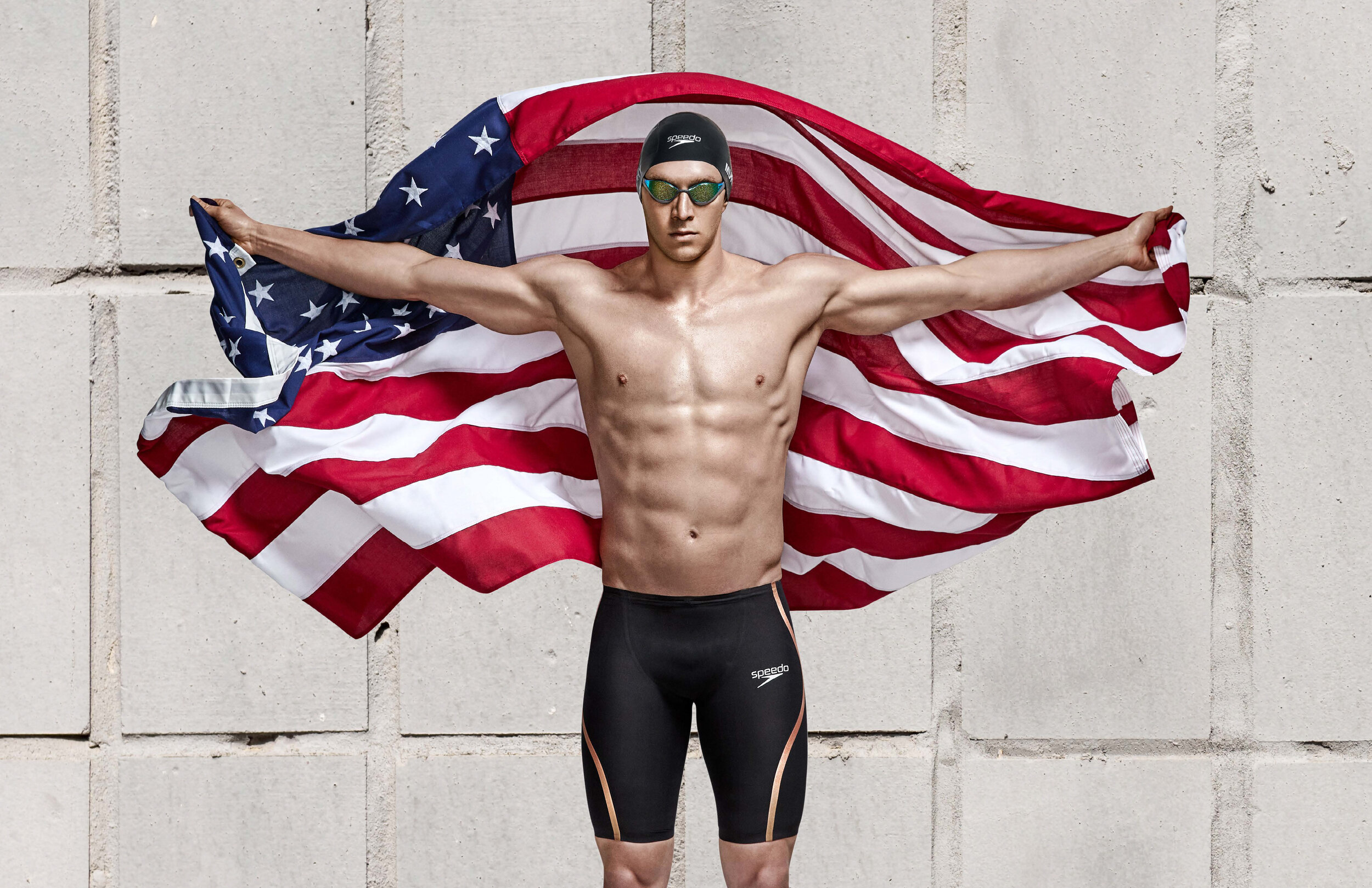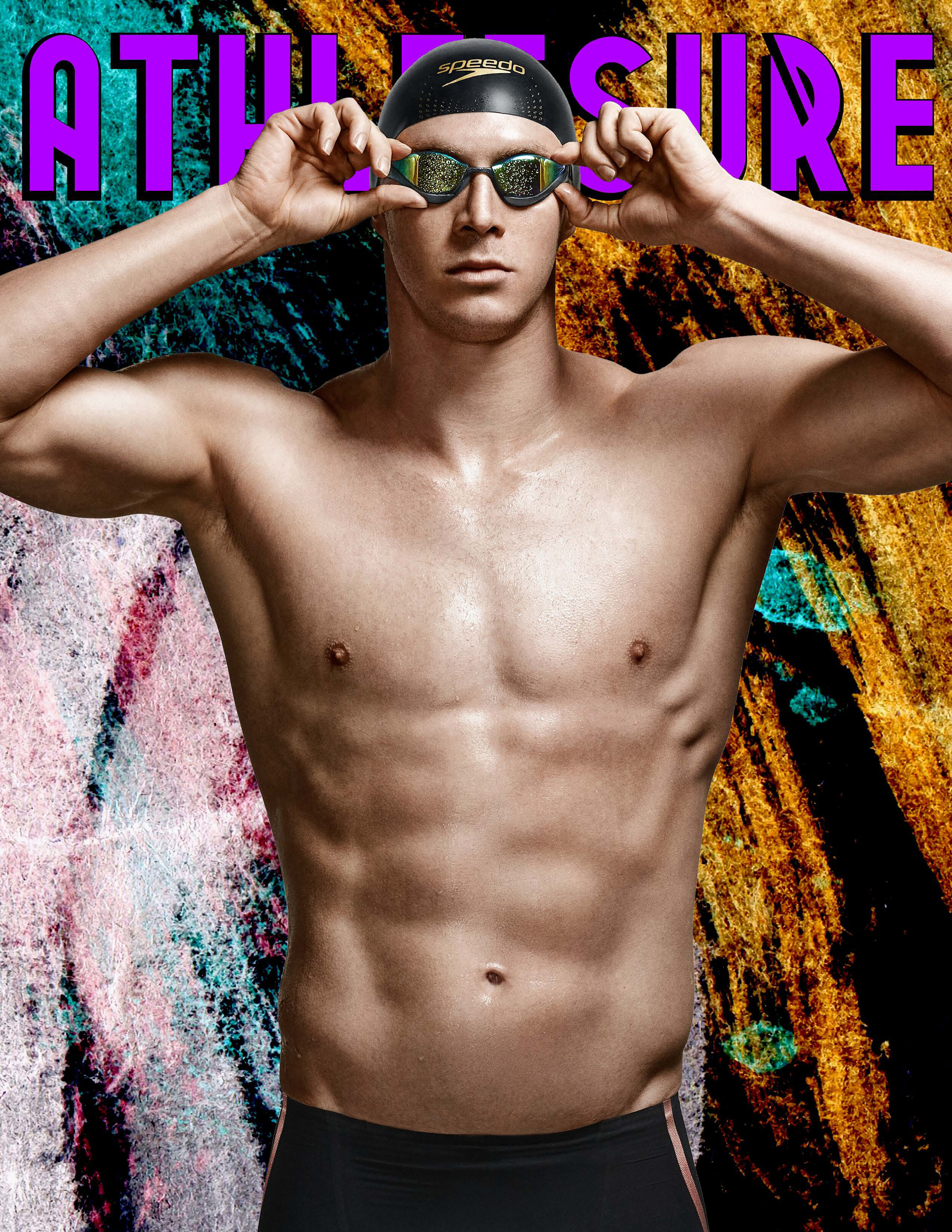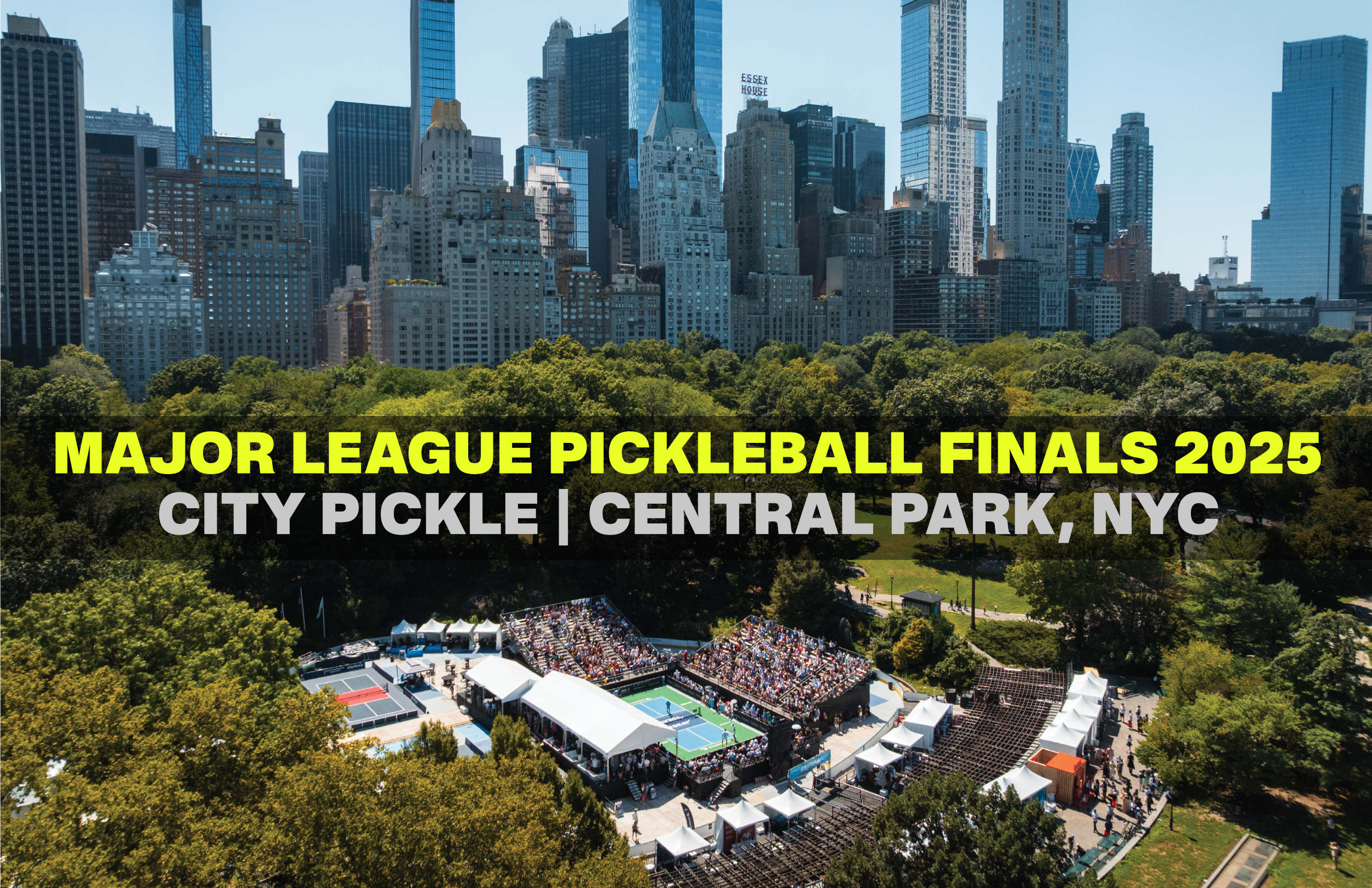We are 1 year away from the Summer Olympic Games in Paris 2024! There is nothing like that time of year when we cheer for our favorite athletes as they make their dreams a reality! This month, we caught up with Nathan Adrian 8X Team USA Swimming Olympic Medalist (5G, 1S and 2B). We enjoyed seeing him in Beijing 2008, London 2012, and Rio 2016. We wanted to catch up with this freestyle swimmer to find out more about how he got into the sport, competing in it, his Olympic experience, safe sun that allows swimmers to enjoy being in the water without sacrificing their aesthetics, how he gives back to the sport, and how he continues to advocate for men's health.
ATHLEISURE MAG: When did you fall in love with the water?
NATHAN ADRIAN: Oh haha, you know, I think before I was even old enough to make memories to be honest. Some of my earliest earliest memories are my mom going and doing laps and I would just turtle on her back and just cruise around. It was something that was just always deeply engrained in all of us as a family. My sister is 8½ years older than me, my brother is 6 years older than me, so it’s something that I was born into and it wasn’t just something that us as a family picked up.
AM: That’s amazing!
When did you realize that freestyle was going to be something that you wanted to continue to do and excel in?
NA: Oh yeah, good question! So like, swimming overall – freestyle is what I gravitated towards and I had a really good situation and set of coaches that gave me what I needed at that particular time in my life and my development as an athlete. So when I was young, it was just fun times and it was all games, happy smiles and lots of energy. That transitioned into games and also, “hey, let’s set some goals and try to focus while we’re here. Let’s try to show up more,” and that kind of thing. Then, eventually, it was, this is my life and this is how I did it. I set goals, I worked really hard, and through that, that’s how I think that I fell in love with that process. It also me as an individual, looking back, swimming was the perfect thing for me. I had a lot of energy, it helped me focus and it also allowed me to set those big goals and then you set those little goals and if you’re good at it, you can set little goals for every month of practice, every week of practice and down to everyday of practice. If you achieve that, whether you achieve them or don’t achieve them, if you reflect and then you figure out how you can be better, that’s just like a little puzzle that you’re trying to optimize and to figure out how you can be the best athlete that you can be.
AM: So true!
Did you always dream about going to the Olympics?
NA: So that started when I was watching the 2000 Olympics. I was about 11 and then in 2004, I was trying to qualify for the Olympic Trials and I did not and then in 2008, I was like, “hey, I’m 19 and I know that it’s kind of young, but maybe I can do this if the stars align.
AM: We enjoyed watching you and to know that you have participated in the Olympic Games of Beijing, London, and Rio where you medaled as an individual as well as a team of where you swam along with Lochte, Phelps, Murphy, and all of these amazing people, what was it like to work with those people and those various teams?
NA: Oh that was awesome! I feel very very blessed. I really got to experience what I consider to be one of the highlights of Team USA dominance in the sport. You know, people who were around during the 70s and stuff, they would argue back pretty hard core, but that’s ok. This is what I would call the modern era of swimming let’s call it that. There were guys like Michael Phelps (28X Medalist 23G, 3S, 2B), there was Jason Lezak (8X Medalist 4G, 2S, 2B), Aaron Peirsol (7X Medalist 5G, 2S), Ian Crocker (5X Medalist 3G, 1S, 1B), Brendan Hansen (6X Medalist 3G, 1S, 2B) – oh my gosh, these guys had world records in each of their events and then in my 2008 team, I was with Dara Torres (12X Medalist 4G, 4S, 4B), Katie Hoff (3X Medalist 1S, 2B) at the peak of her game, I was with Natalie Coughlin (12X Medalist 3G, 4S, 5B) when she won. There were so many athletes for me to watch and learn from. It was absolutely incredible for me to be part of that and especially on that 2008 team, that was a transition for me from being a fan to actually doing it on that international stage. So I got to see my heroes and watch them, talk to them, hang out with them, and be a part of their team. As you move on from that, as with all things, you see the times that swimmers are going so fast as they are now. You take what they did and try to bring it in to what you’re doing and make it better!
AM: What were some of your favorite moments in competing or just being with them?
NA: Oh gosh, I think that there’s a lot! I mean, I have 8 medals so those are obviously a favorite moment. The ones that aren’t just as public, are those that happen when you are with a team or a group for 3 or 5 weeks all day everyday – like summer camp for adults! But we’re all there for a job with a very, very serious purpose so there’s not much messing around. Whether it be someone I think playing a prank in 2008 and they put a cicada in the trail mix bag which was pretty funny. I mean it’s pretty gross because they’re so big!
Another one in 2012, I roomed with Matt Grevers (6X Medalist 4G, 2S) which is one of my best friends to this day. He looked at me and after we both won, he was like, “dude, think back to a year ago, who would have bet on us besides our parents?” You know? Special moments like that are awesome because in 2011, I didn't medal in any of the individual races and Matt didn’t even make the World Championships team – so we weren’t even on the radar for winning. But here we are at that point, we won gold and we’re preparing for the 4 X 100 medley relay after that. So that was really awesome.
Just eating in the dining hall and experiencing that. World Championships is similar, but not the same as the Olympics. The Olympics are just that special feeling because you have every sport there and to just people watch and to enjoy that. You can watch the pride that people have in their country and as they are getting ready to compete and do what they can to win those medals that’s just something that’s really special.
AM: Obviously swimming is such a great way to meet your fitness goals. Here at Athleisure Mag, we like to ask athletes what you like to do in and out of the water to stay fit that we can add to our fitness routines?
NA: You know, I actually think that one of the things that we did was a lot of good mobility. I actually find myself that after pouring that first cup of coffee, I will just do a really deep lunge hold. My hip flexors, I’m sitting in a chair right now, I need to stretch these hip flexors out. I’m probably not going to do it here at work, but in the morning is a great time as you’re getting your mobility going. Same thing with doing some thoracic spine mobility. Again, this is before my daughter and my wife is awake, I’m just sitting in the kitchen doing Spider-Man stretches which are different rotational stretches. It really is that if you don’t use it, you’ll lose it! I want to be able to keep that mobility and then I do my best to get pops of strength in.
Certain days when I can’t get into a weight room, you need to activate those muscles, you do a push up, a bodyweight squat, you can do a single leg squat – find an overhang and do a pull up. Do something just to activate it and keep those muscles moving. I’m in a pool right now, I work in a pool, but I just try to do it. I’m telling you what I want to do, and I don’t always live by it. But I do try to get into the pool and do some aerobic stuff because you’ve just got to keep that heart rate up and keep it moving.
Definitely another thing that if you don’t use it, you lose it! That’s where Dermasport really comes in nicely because I’ve used it. My break is usually smack dab in the middle of the day and we’re coming in on a California heat wave right now so it’s about to be bright and sunny and I’m swimming in it. So I need to wear my sunscreen and then afterwards, I need to be able to take it off so that I don’t look funky when we’re talking to kiddos and giving them lessons and things.
AM: How did your partnership with Dermasport come about and what was it that you felt was synergistic between you and the brand?
NA: Well, the partnership came about because I was actually working with somebody with some goggles and they knew about Dermasport and they introduced me to the team. They sent me a trial package and I loved it. I grew up in Seattle, so we were doing sunscreen over the summer, but I didn’t have that 365 exposure to the sun that we have here California now. So when I moved down here, it was like, what do I do? Everybody was just like zinc, zinc, zinc – everyone looked like a ghost, the creases in your elbows looked all white even though you scrubbed and did that whole song and dance. I tried this and it’s zinc sunscreen, but it also moisturizes my face and I feel better after I put it on as well as more hydrated than I did before – which is awesome. Then, you do the cleanser which gets it all off and then the moisturizer afterwards as it’s very refreshing. I mean, it’s a product that’s made for swimmers. Even though I’m not still swimming internationally, I'm still very much so a swimmer. I'm a swimmer in California that needs to protect my face. My sister is actually a derm PA so she’s constantly reminding me on my sunscreen. I’m like, “no, no – I got it covered. I’m doing what I can to protect my face from the sun.”
AM: What will you be doing with the brand in terms of clinics, partnerships etc. that people will be able to see?
NA: I think that we’re still working on that and developing it. There’s actually a meet coming up here that I’m hoping – I mean we just got the product launch happening, so if I can get my hands on some, I’d love to go and see some of those master swimmers and let them try. I mean, this is one of those things that I know that people just need to go and try it. You need to just get your hands on a sample, try it, and it will absolutely blow you away with the way that your face feels when using this sunscreen as opposed to the other ones that are made to be in the water. I will say that certainly other people have made sunscreens that make you feel hydrated, that make you feel nice, but this is something that’s taking a beating! We’re in chlorine water and the sun so it has to have some staying power and it does!
AM: Are there any projects that you’re involved in that you would like to share that we can keep an eye out for?
NA: Honestly, right now, I’ve got my hands full. My life has changed a lot since I was done competing. I have 2 daughters now, so that’s definitely a project, I’m here at the Swim School and we’re running swimming lessons trying to teach as many kiddos to swim as we can. I still do a lot of stuff with the USA Swimming Foundation, traveling around especially during Water Safety Month talking about the importance of swimming lessons and how it can save lives.
I also do a little bit of men’s health advocacy. You know, I was diagnosed with cancer and it’s kind of an uncomfortable thing to talk about for some people and I’m pretty comfortable talking with people about it especially because it was testicular cancer (Editor’s Note: At the age of 30 in 2018, Nathan was diagnosed, it was caught and treated.) and I think that there is just a cultural barrier for people – for men specifically to 1, see the doctor and 2, to talk about an issue with their reproductive organs. Most of the time, when testicular cancer is diagnosed, the patients know that something was wrong pretty well in advance. It’s really sad in that way when you talk to doctors and they’re like, “yeah, so many people wait and wait and they wait until their lower back is hurting or they’re coughing up blood because it spread and they just didn’t know.” You can just be out there whether it’s a blurb on the bottom of the ticker tape on ESPN or whatever it might be and say, “hey, testicular cancer is a thing and it affects young people too.” That’s something that means a lot to me.
AM: How do you give back to the sport to the next generation of people coming up?
NA: Well, I was in the water for about an hour today teaching kids how to swim! I have another couple of lessons coming up later on today around 1pm. I mean, just doing what I can! I feel very blessed. Summer is an absolute marathon, just because it’s summer time and that’s when we can run all day long because kids aren’t in school. But it’s an absolute dream come true to be able to do something that I love, to be able to spread my love for the sport and to maybe ignite some passion in some others as well as give a life saving skill. It’s the only sport that is a life saving skill! I just feel so lucky to be able to wake up and be excited for what I’m able to do and to feel good about what I do every day.
AM: What do you want your legacy to be in the sport or in general?
NA: I don’t know. People who ask me that, I thought that I would have a better answer by now. I think that just thinking about it off the top of my head, like I was talking about in 2008, me taking what other people were doing at that time, making it their own and making it better. Just being a small piece of that – maybe the athletes of today saw something that I did or how I approached my swimming. It doesn’t have to be that every athlete has to do their swimming the way that I did. I think that that is something that I learned back in 2008 where I said, “oh, ok I can’t do that.” I can try this, or this might work or I can see myself doing something like that could work. For those that see themselves in something that I do, them taking it and then working with their coaches and then bringing that further and further. The cool thing about swimming is that we’re still setting World Records pretty regularly. I mean track and field is pretty fun and super exciting, but – the 100 meter dash there hasn’t been a World Record in quite some time. So that’s what I love seeing. People pressing it further and further.
PHOTOGRAPHY CREDITS | PG 52 + 55 Courtesy Narthan Adrian | PG 56 Stephane Kempinaire KMSP DPPI Icon Sportwire | PG 59Zumapress/Icon Sportswire |


